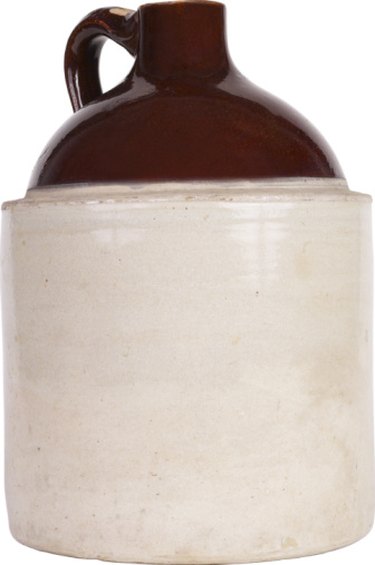
Painting and glazing are two key decorative finishes used on ceramics. The same idea is also used on a variety of other materials, but the composition of the glaze finish is altered so it adheres to the surface. These two finishes are both designed to make the object more desirable and to protect the base substance, but there is confusion over what the differences are between them and if they can be used together.
Paint
Video of the Day
Paint is used to decorate any number of materials. Most paints are normally water, oil, enamel or acrylic-based and come in a huge range of colors. The use of paint makes an item more desirable because of the colorful and intricate designs that can be applied. The composition of paint depends on where it is going to be used. The solvent in the paint is changed to suit this variable.
Video of the Day
Glaze
Glaze is a clear liquid applied to the outside of ceramics to give a high-gloss finish. Another way of looking at glaze is to compare it to lacquer that would be applied to metal or wood. What makes glaze different is the process by which it is applied. The key advantage of glaze is that it allows the ceramics to hold hot substances that would otherwise damage the pottery and other decorations. Glaze is supposed to have no color, but the substances used to make it and the firing process tends to give it a tinge rather than a solid color. The basic component of glaze is silica with a metallic oxide added to it.
Application
Paints are applied with a brush, roller or aerosol and allowed to dry. The paint will then dry, forming a solid layer. The method used for applying the paint depends on the type and size of surface it is being applied to. High-quality ceramics still have the designs painted on by hand, using a brush. Glaze is applied to the ceramics with a brush, but it is then placed in a kiln and cooked, or fired. The glaze then forms a solid glossy outer layer on the ceramics. This process differentiates glaze from lacquer.
Together
It is not unusual to have paint and glaze on the same piece of pottery. This is because they perform different tasks that can be combined. The paint is purely decorative, making the item more desirable. The glaze is then applied in the same way over the paint to add gloss and to protect the item. Underglaze is usually applied if both are being used to stop the painted image blurring when fired. This underglaze is painted on and is much more similar to lacquer.